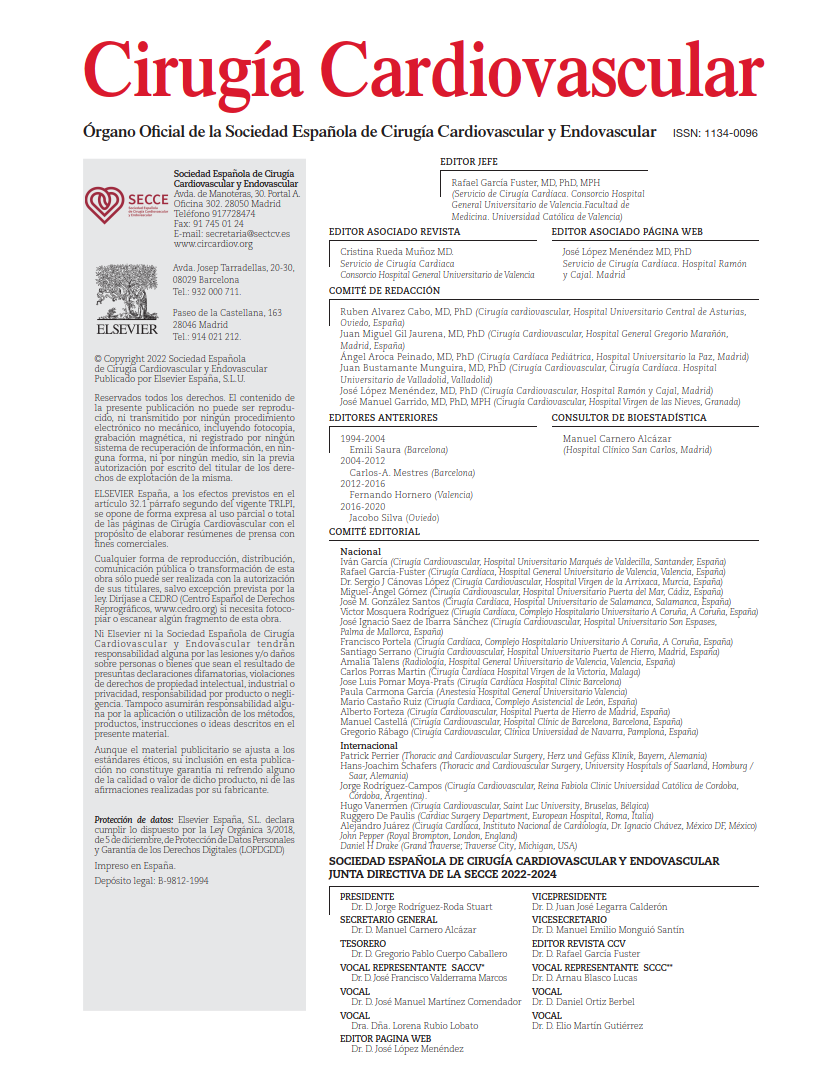Mitral transcatheter edge-to-edge repair (M-TEER), with MitraClip® as the most widely used device, has seen rapid global adoption over the past decade. It is currently indicated in high surgical risk patients with primary mitral regurgitation (MR), and in symptomatic patients with secondary MR despite optimal medical therapy. However, as its use has expanded, so has the number of cases in which the procedure fails to achieve its therapeutic goals, leaving conventional surgery as the only remaining option.
Despite the increasing frequency of these scenarios, there is limited literature to guide surgical decision-making after failed M-TEER. The CUTTING-EDGE registry was designed to address this gap, aiming to compare outcomes between mitral valve (MV) repair and replacement following an unsuccessful transcatheter repair.
This study analyzed data from 332 patients across 34 centers who underwent MV surgery between 2009 and 2020 after failed M-TEER, with the goal of identifying which surgical approach yields better outcomes. The population included clinically complex patients with advanced age (mean 74 years) and high surgical risk (median STS-PROM 3.9%). Only 7.5% ultimately underwent surgical MV repair, while the vast majority (92.5%) received valve replacement. The design was observational and retrospective, based on prospectively collected data, with a median follow-up of just over 9 months. Clinical, echocardiographic, surgical, and follow-up variables were evaluated, focusing primarily on 30-day and 1-year mortality.
Although selection bias is evident (i.e., patients with more favorable anatomy and fewer comorbidities were more often selected for repair), the findings of the study are revealing. Overall in-hospital mortality was high (15.1%) but significantly lower in the repair group (4.0% vs 17.7%). The difference widened with follow-up: 1-year mortality was 10.5% in the repair group compared to 33.3% in the replacement group, and 2-year survival clearly favored repair (90.3% vs 70.4%). Despite the small number of patients in the repair cohort, multivariable analysis confirmed a significantly lower mortality associated with repair (adjusted HR = 4.24; p = .044 for replacement).
The authors also identified variables associated with a higher probability of successful repair: fewer comorbidities, primary MR, a lower number of devices implanted during M-TEER, and absence of concomitant tricuspid valve surgery. Although expected, these findings are useful to define the subset of patients who may derive greater benefit from surgical repair after failed M-TEER.
COMMENTARY:
The value of this study lies not only in the magnitude of its findings but in its clinical implications: mitral valve replacement should not be considered the sole surgical alternative following failed MitraClip®. While surgical repair poses significant technical challenges due to tissue ingrowth of the device and potential valve distortion, when feasible, it appears to offer superior survival outcomes. This observation should not be interpreted as a universal recommendation but rather as a call for individualized assessment, where surgical expertise, residual valve anatomy, and the patient’s clinical stability must guide the decision-making process.
Given its observational nature, the study cannot establish causality, and the limited proportion of patients undergoing repair restricts statistical power. Nonetheless, it generates a hypothesis of significant relevance that merits further exploration in prospective trials or more robust analyses. It also highlights the importance of meticulous planning for the initial M-TEER procedure, as failure may irreversibly alter the native anatomy and limit future therapeutic options.
In conclusion, this work underscores the need for a tailored surgical approach after failed M-TEER, in which repair should not be dismissed outright. As percutaneous procedures become more prevalent, the quality of subsequent surgical decisions must improve in parallel, through a balanced, critical evaluation focused on the patient’s long-term benefit.
REFERENCE:
Marin-Cuartas M, Kang J, Noack T, de la Cuesta M, Krane M, Falk V, et al. Surgical mitral valve repair vs replacement after failed mitral transcatheter edge-to-edge repair: The CUTTING-EDGE Registry. JACC Cardiovasc Interv. 2025;18(7):912–923. doi:10.1016/j.jcin.2025.02.008



